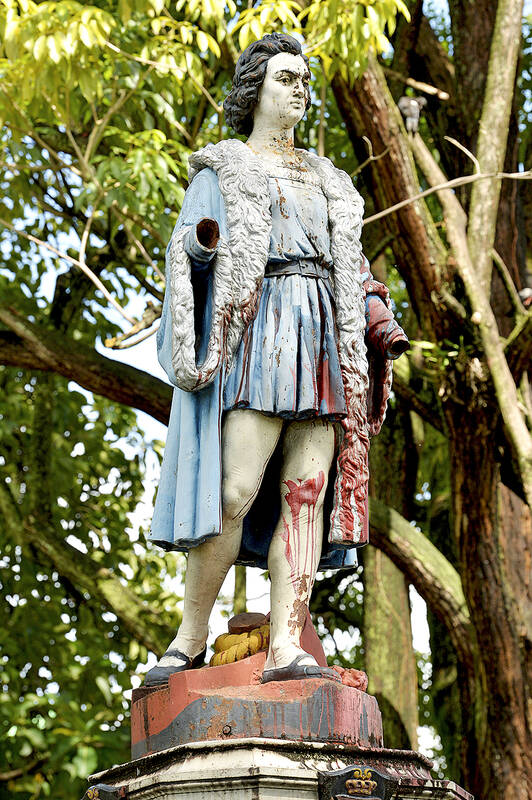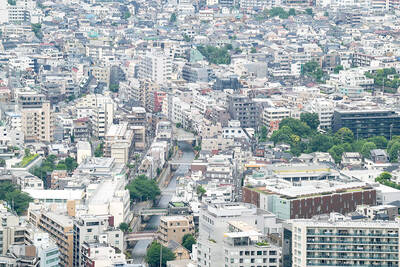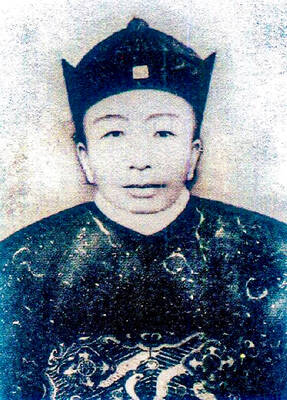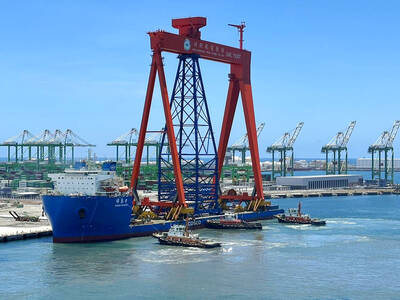In a small auditorium in the seaside capital of Trinidad and Tobago, Christopher Columbus and other colonial-era figures came under scrutiny late Wednesday in a lengthy debate punctuated by snickers, applause and outbursts.
The government had asked residents of the diverse, twin-island nation in the eastern Caribbean if they supported the removal of statues, signs and monuments with colonial ties and how those spaces should be used instead. One by one, people of African, European and Indigenous descent stepped up to the microphone and responded.
Some suggested that a prominent Columbus statue be placed in a museum. Others requested it be destroyed and that people be allowed to stomp on the dusty remains. One man encouraged officials to round up statues of colonial figures and create a “square of the infamous.”

Photo: AP
The majority of the more than two dozen people who spoke, and dozens of others commenting online, supported removal of colonial-era symbols and names.
“It’s an issue about how after 62 years of independence ... we continue to live in a space that reflects the ideals and the vision and the views of those who were our colonial masters,” said Zakiya Uzoma-Wadada, executive chair of the islands’ Emancipation Support Committee.
Trinidad and Tobago is the latest nation to embrace a global movement that began in recent years to abolish colonial-era symbols as it reckons with its past and questions if and how it should memorialize it as demands for slavery reparations grow across the Caribbean.
The public hearing was held just a week after the government announced it would redraw the nation’s coat of arms to remove Christopher Columbus’ three famous ships — the Pinta, the Nina and the Santa Maria — and replace it with the steelpan, a popular percussion instrument that originated in the Caribbean nation.
Others pushed for further changes on Wednesday night.
“What the hell is the queen still doing on top of the coat of arms? Please let us put her to rest,” said Eric Lewis, who identifies as a member of the First Peoples, also known as Amerindians.
Trinidad and Tobago was first colonized by the Spanish, who ruled it for nearly 300 years before ceding it to the British, who governed it for more than 160 years until the islands’ independence in 1962. The colonial imprint remains throughout streets and plazas, with a statue of Christopher Columbus dominating a square of the same name in the capital of Port-of-Spain.
The islands’ National Trust calls it “one of the greatest embellishments of our town,” but many differ.
“It’s disrespectful to those who were the victims of him. The people suffered tremendously,” said Shania James as she called for the statue to be placed in a museum. “His atrocities should not be forgotten.”
But a handful of people dismissed concerns about how their ancestors were treated, including tour guide Teresa Hope, who is Black.
“They survived, and I survived, and we will keep on moving,” she said, adding that if the actions of historical figures were scrutinized, “everything would get knocked down.”
Rubadiri Victor, president of the Artists’ Coalition, said his country should instead erect statues and monuments to honor some of the more than 200 Trinbagonians who represent the best of the islands.
“We stumbling and tripping over heroes,” he said. “To have produced so much genius, and that lineage is nowhere present in the landscape.”
Among the suggestions of people to honor was Nobel Prize-winning author V.S. Naipaul; Cyril Lionel Robert James, a historian and journalist; and Kwame Ture, who helped spearhead the Black Power movement in the U.S. Others suggested that prominent Amerindians and more local women be honored, including Patricia Bishop, an educator and musician and Beryl McBurnie, a teacher credited with promoting and saving Caribbean dance.
The debate was scheduled to continue soon in the sister island of Tobago, with the government having received nearly 200 submissions overall so far on what it should do.

The canonical shot of an East Asian city is a night skyline studded with towering apartment and office buildings, bright with neon and plastic signage, a landscape of energy and modernity. Another classic image is the same city seen from above, in which identical apartment towers march across the city, spilling out over nearby geography, like stylized soldiers colonizing new territory in a board game. Densely populated dynamic conurbations of money, technological innovation and convenience, it is hard to see the cities of East Asia as what they truly are: necropolises. Why is this? The East Asian development model, with

June 16 to June 22 The following flyer appeared on the streets of Hsinchu on June 12, 1895: “Taipei has already fallen to the Japanese barbarians, who have brought great misery to our land and people. We heard that the Japanese occupiers will tax our gardens, our houses, our bodies, and even our chickens, dogs, cows and pigs. They wear their hair wild, carve their teeth, tattoo their foreheads, wear strange clothes and speak a strange language. How can we be ruled by such people?” Posted by civilian militia leader Wu Tang-hsing (吳湯興), it was a call to arms to retake

This is a deeply unsettling period in Taiwan. Uncertainties are everywhere while everyone waits for a small army of other shoes to drop on nearly every front. During challenging times, interesting political changes can happen, yet all three major political parties are beset with scandals, strife and self-inflicted wounds. As the ruling party, the Democratic Progressive Party (DPP) is held accountable for not only the challenges to the party, but also the nation. Taiwan is geopolitically and economically under threat. Domestically, the administration is under siege by the opposition-controlled legislature and growing discontent with what opponents characterize as arrogant, autocratic

Desperate dads meet in car parks to exchange packets; exhausted parents slip it into their kids’ drinks; families wait months for prescriptions buy it “off label.” But is it worth the risk? “The first time I gave him a gummy, I thought, ‘Oh my God, have I killed him?’ He just passed out in front of the TV. That never happens.” Jen remembers giving her son, David, six, melatonin to help him sleep. She got them from a friend, a pediatrician who gave them to her own child. “It was sort of hilarious. She had half a tub of gummies,